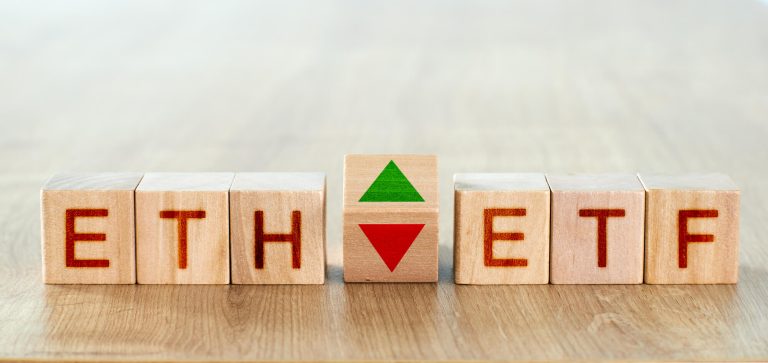A summarizing review of what has been happening at the crypto markets of the past week. A look at trending sectors, liquidity, volatility, spreads and more. The weekly report in cooperation with market data provider Kaiko.
Bitcoin briefly hit a 2-month high over the weekend, crossing $28k amid a volatile macro news cycle and turmoil in the middle east. Meanwhile, week two of the SBF trial begins today, Visa tapped Solana for USDC settlement, a Swiss startup issued a tokenised security on Coinbase’s Base network and six new ETH ETFs received a lukewarm reception.
Lackluster after ETH-ETF debut?
Last week, a total of six futures-based ETH ETFs started trading on U.S. markets following an earlier-than-expected approval by the SEC. However, they failed to attract meaningful volume and boost crypto markets, which remain stuck in a low volume and low volatility regime.
The two largest ETFs by trade volume - VanEck’s EFUT and ProShares EETH - saw an average daily trade volume of just $0.5mn during their first week of trading. For context, the first BTC futures ETF - ProShares Bitcoin Strategy (BITO) - managed to attract more than $1bn in trade volume during its first day of trading.

Arguably this launch comes in a very different market environment. Risk-free rates have surged in September amid relentlessly strong U.S. economic data and growing macro uncertainty has weighed on demand for risky assets like crypto. Additionally, none of the ETFs had a BITO-like first mover advantage.
However, the lack of enthusiasm was notable. Despite prices briefly spiking at the start of the week, ETH closed Sunday in the red. In fact, ETH has been massively underperforming the broad market since the Merge, with both the ETH/BTC price and volume ratio trending downwards over the past year.
ETH's underperformance is likely due to the ongoing impact of the bear market, which historically has seen traders turn to BTC, the oldest and largest crypto asset. ETH spot trade volume has also stayed mostly flat over the past two months, only spiking above $2bn a handful of times.
While open interest for ETH perpetual futures has been increasing since early September, funding rates remained neutral to negative suggesting the market lacks clear direction.
Overall, even though ETH futures ETFs failed to attract meaningful volume, they still offer a liquid, cost efficient and transparent way to gain exposure to ETH. This could help change institutional investor's perception for the asset which is (for now) strongly correlated to BTC despite being conceptually different.
Bitcoin trade volume plummets on Binance
Bitcoin trade volume on Binance nearly halved to $49bn in September, its lowest level since Oct 2020, after the exchange removed its zero-fee promotion for its largest Bitcoin trading pair BTC-TUSD. This is the second largest monthly drop since 2020. In April, BTC trade volume already fell by a whopping 67% - a decline comparable with the 2021 market crash - after Binance removed its large-scale zero fee promotion for 13 BTC trading pairs. The trend is clear evidence that trade volume on Binance is heavily linked to their trading fee promotions.
Bitcoin's correlation with risk assets is rising
While BTC 60-day correlation with risk assets has been moving upwards, it is way below its 2022 average of over 50%. In fact, BTC showed remarkable resilience to surging borrowing costs and growing macro uncertainty in September, outperforming the S&P 500 and the Nasdaq 100. This suggests it has strong support and traders prefer BTC liquidity in times of uncertainty. Overall, the rout in Treasuries is unlikely to halt without a meaningful decline in risk assets which would increase the attractiveness of fixed-income. This could still spill into crypto markets as correlations tend to converge in times of stress.













